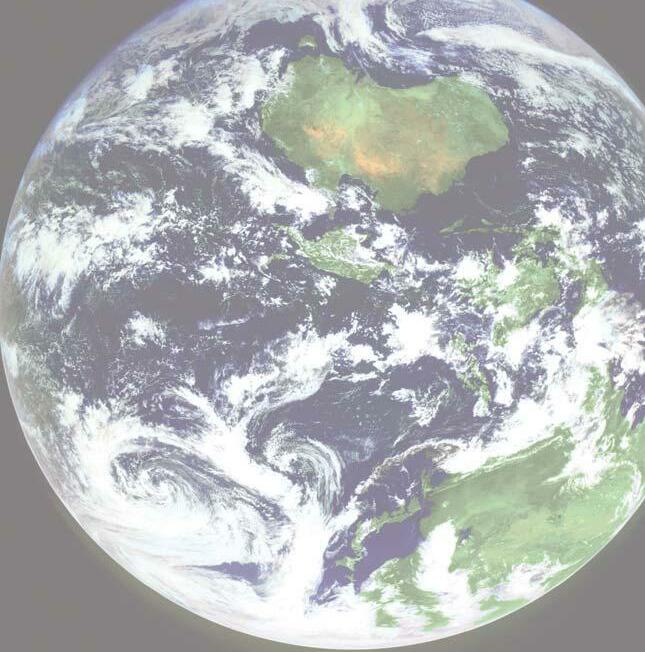TECHNICAL NOTES LIVING PLANET INDEX
invertebrates are excluded, as few population time
species richness is higher in the tropics. Thus, if the
within each biome, and the marine species index was
Data collection
series data were available. It is assumed, therefore, that
Living Planet Index were calculated simply as
calculated as the geometric mean of the four ocean
The species population data used to calculate the
trends in vertebrate populations are indicative of overall
described above, it would be unrepresentative of global
indices. The terrestrial species index includes 562
Living Planet Index were gathered from a variety of
trends in global biodiversity.
biodiversity. To address this issue, before carrying out
species of mammals, birds and reptiles found in forest,
any calculations, the data were divided into biomes
grassland, savannah, desert or tundra ecosystems
sources including publications in scientific journals, literature from non-governmental organizations, and the
Calculation of the indices
(terrestrial, freshwater or marine) depending on the
worldwide. The freshwater species index comprises
internet. All data used in constructing the index are a
For each species, the ratio between its population in
principal habitat of the species. Where a species
323 species of mammals, birds, reptiles, amphibians,
time series of either population size or a proxy of
each pair of consecutive years is calculated. To
commonly occurs in more than one biome, its
and fish living in rivers, lakes or wetland ecosystems.
population size. Direct population size trends included
calculate the index in a given year, the geometric mean
breeding habitat was used to determine its biome.
The marine species index includes 267 species of
total population estimates, such as counts of an entire
of all the ratios of species populations in that year and
species; density measures, for example the number of
the previous year is multiplied by the index value of the
to the biogeographic realm or ocean they inhabit:
birds per kilometre of transect; and biomass or stock
previous year. The index value is set equal to 1 in
Afrotropical, Australasian, Indo-Malayan, Nearctic,
estimates, particularly for commercial fish species.
1970. From this baseline, the index changes from year
Neotropical, or Palearctic realms for terrestrial and
terrestrial, freshwater and marine species indices. The
Other proxies of population size were also used, such
to year in line with the geometric mean of all the
freshwater species, and Atlantic/Arctic, Indian, Pacific,
hierarchy of indices is shown in Figure 24. Each biome
as the number of nests of marine turtle species on
changes in population of species with population data
or Southern Oceans for marine species. For some
carries equal weight within the overall Living Planet
various nesting beaches.
in both years.
species, different populations occur within different
Index. Each realm or ocean carries equal weight within
realms or oceans, in which case the populations would
each biome. Each species carries equal weight within
All population time series have at least two data
In cases where data exist for more than one
Within each biome, species were divided according
mammals, birds, reptiles and fish from the world’s oceans, seas and coastal ecosystems. The Living Planet Index is the geometric mean of the
points, and most have more. Only data collected by
population of a single species, or where more than one
be divided accordingly. The total numbers of species
each realm or ocean. Each population carries equal
methods that are comparable across years are
time series was collected for the same population, the
contributing to each realm/ocean and biome are given
weight within each species.
included – a population estimate taken at one point in
geometric mean of all ratios for that species was used
in Table 5.
time would not be used with a second estimate from
in the index calculations rather than all measurements
another survey of the same population at another point
for that species.
in time, unless it was clear that the second estimate was meant to be comparable with the first. Plants and
More species population data are available from temperate than tropical regions of the world, and
Table 5: NUMBERS OF SPECIES INCLUDED IN THE LIVING PLANET INDEX BY REALM/OCEAN AND BIOME Realm or ocean Afrotropical Australasian Indo-Malayan Nearctic Neotropical Palearctic Atlantic/Arctic Ocean Indian Ocean/Southeast Asia Pacific Ocean Southern Ocean World
Terrestrial 72 15 28 269 19 159
562
Freshwater 12 11 19 168 12 101
323
Separate indices were calculated for each
1. The Ecological Footprint
freshwater species indices were then calculated as the
The Ecological Footprint is a measure of how
geometric mean of the six biogeographic realm indices
much biologically productive land and water area
Fig. 24: HIERARCHY OF INDICES WITHIN THE LIVING PLANET INDEX LIVING PLANET INDEX
Marine Terrestrial
Realm 1
117 15 105 30 267
ECOLOGICAL FOOTPRINT and BIOCAPACITY
biogeographic realm and ocean. The terrestrial and
Species 1
Population 1
Freshwater
Realm 2
Species 2
Population 2
Marine
Realm 3
Species 3
Population 3
ASIA-PACIFIC 2005: THE ECOLOGICAL FOOTPRINT 21



